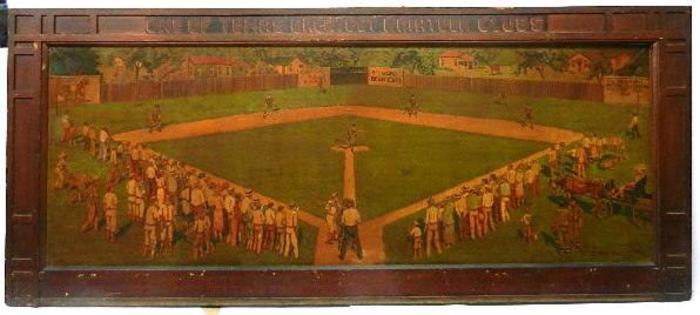Herbert Barndard "1916 Houston Texas Amateur Baseball Game"
-
- Herbert Barndard
- (1880 - 1949)
- San Antonio Artist
- Image Size: 54 x 96
- Medium: Oil
- 1932
- "1916 Houston Texas Amateur Baseball Game"
- Contact for Price & Info
- View All By This Artist
-
Biography
Herbert Barndard (1880 - 1949)
Herbert Barnard was a descendant of some of the first American Pilgrim settlers in New England and was a fourth generation artist. First in his family was the American painter John Reuben Chapin, followed by his son, civil war artist and illustrator Will Chapin. Barnard's father, Phillip B. Barnard was a top line wood engraver.
Herbert Barnard began his art career in the 1890's in Chicago as a "paint boy" for the local theaters during the Vaudeville years. Traveling extensively throughout the major theater cities of Chicago, New York and Boston, he quickly gained a reputation as one of the top scenic artists of his day.
Barnard moved to Corpus Christi in 1911 and then to San Antonio, Texas in 1912. For a number of years Barnard was the President of the Battle of Flowers Parade, applying his artistic skills decorating floats. His large canvases hung in Hotels in San Antonio, including the Menger, Gunter and the Blue Bonnet, as well as in the old historic Plaza and Aztec Theaters. Smaller paintings and his murals hung in many private homes as well.
In 1925 Barnard organized the Tulsa Oil Exposition, and in 1931, he staged the very first Mardi Gras festival in Galveston, Texas. Barnard additionally exhibited his works and taught art. Orville A. Campbell (who also studied under Arpa) was one of his students.
Barnard earned his living as a painter both commercially and in the fine art tradition. While he is most remembered for his large mural size paintings, he spent the remainder of his life painting landscapes, missions, cowboys and bluebonnet floral scenes.
He died in Houston, Texas in 1949.


